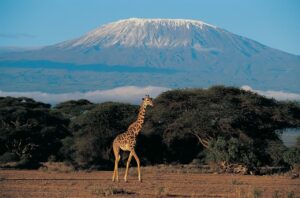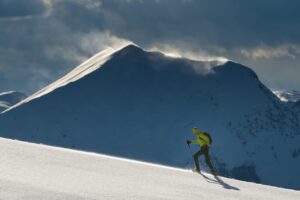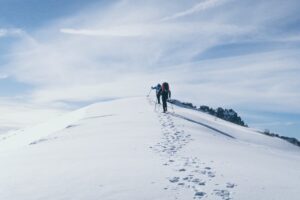Tips And Planning For Climbing Kilimanjaro Successfully
What to know
Climbing Kilimanjaro has more than 20 years of experience in leading hikers and climbers to the summit of Kilimanjaro. Our experienced guides have a proud summit success rate averaging between 96% – 98% and have safely guided thousands of clients to the top of the mountain. This internet guide aims to provide the potential Kilimanjaro climber with valuable and accurate information on climbing Kilimanjaro, which will hopefully contribute towards increasing your chances of a successful summit attempt. We have compiled this information over years of experience as well as from feedback from previous clients. From all the information provided in this guide, the tips listed on this page is probably the most important.
Before The Climb
Be properly equipped
An essential part of your preparation will be to ensure that you are well equipped for your summit attempt. Print our final checklist and mark it off, to ensure that you are. Click on Final Checklist to get to this very important step in your preparation.
Be physically prepared
It is important that your body is adequately prepared for the physical challenges of Mount Kilimanjaro. We have developed a fitness training program which will assist you in getting your body in shape for your Kilimanjaro summit expedition. Please click Fitness Program for more information in this regard.
Mental preparation
It is possible to summit Kilimanjaro successfully. Many before you have succeeded. This should be topmost in your mind when preparing for the summit attempt. You should always remain in a positive state of mind, but not overly arrogant. Try to anticipate various different scenarios, which you may possibly encounter on the mountain and try to work out the most suitable course of action, mentally by yourself or even as a group. Your mental stamina will, without a doubt, make the really difficult sections, like from Kibo to Uhuru or from Barafu to Uhuru, easier to complete. Remember if you are properly equipped, you have taken everything as indicated on the final checklist, you are physically prepared and have all the knowledge gained from this internet guide – you will be mentally confident for the physical part of Kilimanjaro.
Adequate travel insurance
Make sure that you have adequate travel and medical insurance, which will also provide you with cover for the climb up Kilimanjaro.
On The Mountain
Go slowly
Go slowly – “Pole Pole” as they say in Swahili! This is also very important during your first days of climbing. Even if you feel well, slow down and enjoy the scenery.The biggest cause of altitude sickness is ascending too high too fast! The slower you hike to more time you give your body to acclimatize.
Drink enough water
Make sure that you drink at least 3 – 4 liters of liquid a day – preferably water. For your first day it is recommended that you take along fresh water, which may be purchased at the hotel in Moshi before your climb. Try to get the bottles with the screw tops, this way you will also have containers in which to take water further up the mountain. Running water on the mountain is safe to drink from day-2 onward, but care should still be taken. If you are not used to fresh water in nature, prevent any inconvenience by using water purification tablets. REMEMBER! A functioning “body water balance” is one of the keys to a successful climb!
Walk high – sleep low
If possible and especially on your acclimatization day “walk high – sleep low” Try to do a short evening stroll to a higher altitude and then descend to sleep at the camp at a lower altitude. This is essential on your acclimatization day.
Climb light
Climb as lightly as possible; this becomes even more important on your summit night. Extra weight will slow you down and will also make breathing more difficult.
Packing
Remember that you will be on the mountain for at least 5 or 6 days. You need to take enough clothing, especially socks to last for this period. Due to frequent rainfall as well as numerous streams on the routes, it is advisable to pack items individually in your bag. These individually packed items should be wrapped in plastic bags to prevent them from getting wet in case of rain or of being accidentally dropped in a stream.
Clothing
You will require the correct underwear, thermal hiking socks, gloves (preferably mittens), warm head protection, rain coat, sunglasses and sun protection cream. Also remember your hiking boots, hiking/running shoes (it is not necessary to walk with boots or climbers shoes until the last sections where scree and rocks are encountered), and very importantly, a walking stick / ski-pole. One of the most critical items of clothing is an outer jacket. You want it to perform the functions of keeping you warm, protect you at temperatures of as low as minus 25 degrees Celsius, keep the wind out and yet still “breathe”. Try to avoid tight fitting clothing or underwear. This will hamper circulation, causing either cold or discomfort on the mountain. A balaclava is a must, as it will protect your face against cold, wind, sun and snow. Other clothing like shorts, sweaters and T-shirts are strongly recommended, especially during hiking on the lower slopes, when the day temperatures are still high.
The only way to ensure that you are dressed warmly is to follow the principal of wearing the correct clothing layers, starting from against the body. A common mistake made by climbers is to wear almost everything they have and to start off with cotton against the skin. Cotton absorbs moisture perfectly, and moisture trapped against the skin will result in a definite lowering of the body temperature, which could even lead to hypothermia. It is therefore very important to use proper thermal underwear with “wicking” properties (a fabric which has the ability to draw moisture away from the body) and thus enabling it to evaporate to the outside. The middle layer should provide the insulation and a product like polar fleece will be adequate in this regard. The outer layer should be windproof, waterproof and breathable. Products like Ventex, Goretex or Jeantex offer these properties. Short of altitude and physical exertion, cold is one of the most serious obstacles when attempting to summit Kilimanjaro. After securing your booking with us, you’ll receive a comprehensive document, to guide you through the steps of purchasing the correct gear.
Take a ski – pole
A ski – pole is essential. Use of ski poles reduces external and internal loads on the knee joint by up to 20%. Using 1 ski pole is a must, but 2 poles are recommended. Buy one or hire one but take one – view our Gear Rental options.
New batteries
Replace your head lamp and camera batteries with new ones on your summit night.
Acute Mountain Sickness (AMS)
AMS commonly affects people at high altitude, who are not accustomed to high altitude conditions. AMS can be lethal if not treated immediately or if its symptoms are ignored. Probably 70% of all people climbing Kilimanjaro will suffer to some extent from AMS. You should familiarize yourself with this condition and take preventative care. Click Altitude Sickness for more information on this medical condition.
Malaria
Malaria occurs below 1800 meters and you should use the recommended prophylactics. Please consult your doctor about these. Currently, there are various preventative medication products available which will be effective against the malaria strains currently found in Tanzania. Women using oral contraceptives should consult their physicians before using prophylactics.
Other useful tips
Wet wipes
There is no washing water at Barafu, Kibo and Arrow Glacier camps. Wet Wipes are very useful
Snacks
Take enough snacks like energy bars etc. Avoid the toffee like energy bars (as they get very hard and difficult to eat in low temperatures) but rather but the cereal type energy bars.
Adequate sun protection
Wear a good quality pair of sunglasses (with UV protection) and use adequate sun protection cream with a protection factor of at least 20+.
Thermal flask
Use a thermal flask for your water on the summit night, other water bottles might freeze solid.
Camera
Taking pictures with a fully automatic camera at the summit of Kilimanjaro is possible, and most people do this. The secret is to always have a new battery in your camera when going into cold areas at high altitude. A mechanical camera works just as well, provided you have the knowledge to operate it successfully. Cameras exposed to cold do not cease functioning, but remember that if you keep your camera inside your jacket and the lens becomes warm, chances are that it will form condensation when suddenly exposed to extreme cold. This condensation will freeze under conditions at the summit. Therefore, keep your camera dry at all times. Moisture will freeze at the summit which WILL cause your camera to stop functioning.
If using a Film camera
ASA 200 film is good for taking photographs in relatively little light. You might reach the summit just before sunrise and may not wish to wait due to the altitude and the cold. After sunrise, film with ASA 200 or 100 are fine. There are numerous classic photo opportunities, some of which are only available in low light conditions. If you can, and if you are a serious photographer, we recommend that you take a small, portable tri-pod with you. Also remember that it is sometimes so cold that you cannot hold the camera steady.
Mountain water
The stream water high on Mount Kilimanjaro has been tested and has been found to be fit for drinking. However, we recommend that you be on the safe-side and use water purification tablets before drinking.
THE MOST IMPORTANT TIP OF ALL – ENJOY THIS ONCE IN A LIFE TIME EXPERIENCE!!!
Other useful tips:
- Make sure all your clothes and sleeping bag are packed in plastic bag inside the duffel bag, to ensure they stay dry in the event of rain, even if your duffel bag is waterproof. Once something gets wet on the mountain it is difficult, even impossible to dry!
- Something good Vaseline or Vicks Vaporub are good on the summit attempt.
Moist air coming from your noise or on your lips will freeze and become very uncomfortable - Sound travel at night and many people snore on Kilimanjaro – bring some ear plugs to sleep with.
- The trail is very dusty and sinus congestion is a problem with many hikers. Bring a good decongestant spray or tablet.
- Female hikers suffer more from the cold than male hikers. Hand / feet warmers are a good idea (or even a hot water bottle – hot water is available during meal times) and will help keep you warmer in the sleeping bag (minus temperatures to be encountered from the first night onwards)
- Travel with your most important gear as hand luggage – e.g. wear your hiking boots in the plane – missing luggage is a common problem.
- Bring some blister plasters, Vaseline and liner socks. If you start to get blisters it will help a lot.
- There is mobile reception on most of the mountain (except the first days on the Rongai route). If you bring your mobile, make sure you activate international roaming. Because you cannot recharge the battery, only have the phone on an hour or two daily.